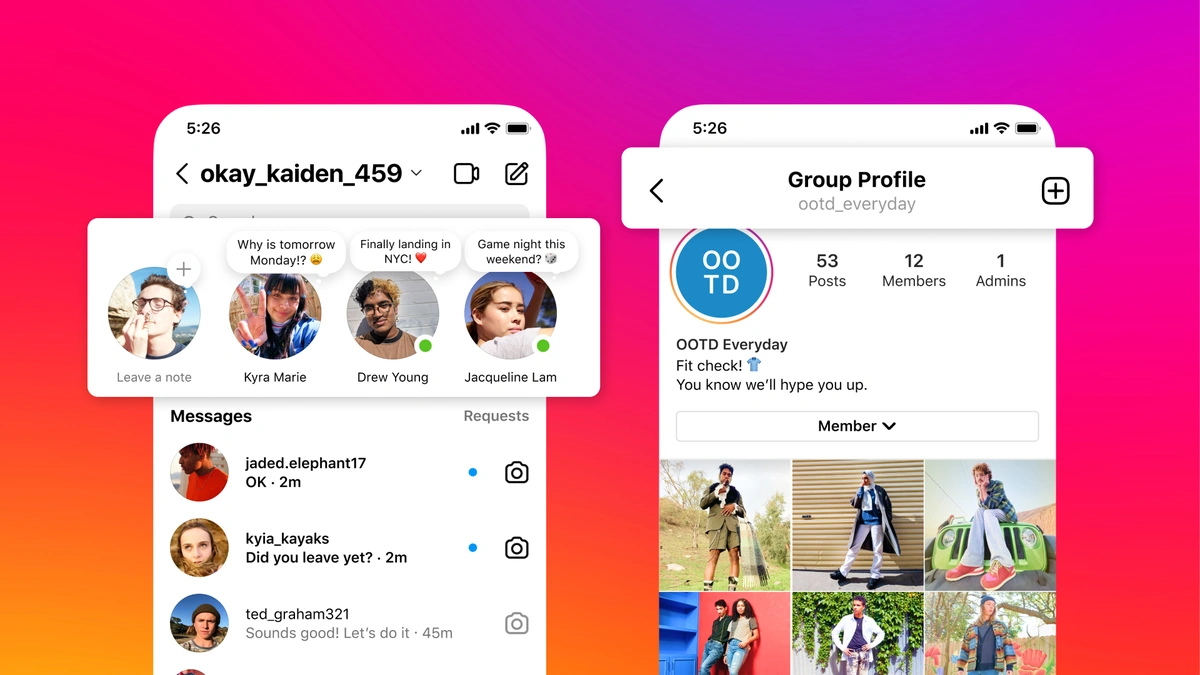Alright, let’s talk about Instagram . It’s not just a place where your niece shows off her vacation photos, it’s a HUGE cultural force especially for teenagers. And here’s the thing: protecting young minds in the digital world? It’s a never-ending battle. So, when Instagram rolls out a new feature aimed at limiting the content teens see, it’s more than just a headline. It’s a reflection of the tightrope social media companies walk between growth, freedom, and responsibility. I initially thought this was just another PR move, but digging deeper, I realized the implications are pretty significant for parents, teens, and well, anyone who cares about the future of the internet. Social media is a huge part of most teens’ lives, so how do we make it safer?
Why This Matters | The PG-13ification of Instagram

So, why is Instagram suddenly so concerned about what teens are seeing? Let’s be honest, it’s not purely altruistic. There’s mounting pressure on social media platforms to address concerns about the impact of their algorithms on young people. We’re talking about mental health issues, body image problems, and exposure to potentially harmful content. It is a move to proactively curb some of the negative criticism. This isn’t just about Instagram playing nice; it’s about staying ahead of potential regulations and maintaining a positive image in the eyes of parents and advertisers alike.
The platform will be using AI to guess the age of users and then filtering content to align with what is considered appropriate for their age group. I think that is interesting, don’t you?
According to a press release from Meta, the parent company of Instagram , these changes are designed to “ensure that young people have age-appropriate experiences” on the platform. What that really means is they’re trying to avoid more bad press. But, even if it’s partially motivated by self-preservation, the outcome could be genuinely beneficial. They are also partnering with third-party organizations. You can find more information on Meta’s parental controls on their website.
How This Works | The Nitty-Gritty Details
Alright, so how does Instagram actually plan to pull this off? It’s not like they can just wave a magic wand and suddenly make everything G-rated for teens. The approach is multi-faceted. They are employing tools like AI to identify and filter content that may be sexually suggestive, violent, or otherwise inappropriate. Think less ‘Game of Thrones’ and more ‘Finding Nemo’ – at least in theory. There are a lot of online safety concerns these days, so tech companies are doing what they can.
One key element is the use of age verification technology. Instagram is asking users to confirm their age when they sign up, and they’re using various methods to try and prevent younger users from creating accounts with false ages. But, let’s be real, teenagers are pretty tech-savvy. I initially thought that younger users would just lie about their age, but a source told me that Instagram is using things like purchase history and other data to better determine ages of users.
Here’s where it gets interesting: Instagram is also giving parents more control over their teen’s accounts. Through Family Center , parents can monitor their child’s activity, set time limits, and even receive notifications when their teen reports an account. It’s like digital babysitting, but hopefully less creepy. For more on parental control features, check out this guide .
The Emotional Angle | Teenagers, Social Media, and the Search for Identity
Let’s be honest, being a teenager is tough. You’re trying to figure out who you are, what you believe in, and where you fit in the world. And social media ? It can be both a blessing and a curse. It offers a sense of community, a platform for self-expression, and a way to connect with like-minded people. But it can also be a breeding ground for comparison, insecurity, and anxiety. What fascinates me is the effect that these changes will have on that.
Imagine being a teen who’s constantly bombarded with images of seemingly perfect bodies, lavish lifestyles, and unattainable beauty standards. It’s easy to see how that could mess with your self-esteem. And that’s where Instagram’s new limits come in. By creating a more curated and age-appropriate experience, they’re hoping to shield teens from some of the negative influences that can thrive on the platform. It’s not a perfect solution, but it’s a step in the right direction, especially since teen mental health is an important thing to focus on right now.
Navigating the New Instagram Landscape | A Guide for Parents
So, you’re a parent trying to navigate this new Instagram landscape. What should you do? First, talk to your teen. Have an open and honest conversation about the potential risks and benefits of social media . A common mistake I see parents make is to just shut it down. That’s generally counter-productive.
Second, familiarize yourself with Instagram’s parental control features. Learn how to set time limits, monitor activity, and report inappropriate content. Empower yourself with knowledge.
Third, encourage your teen to be mindful of the content they’re consuming. Help them develop critical thinking skills so they can evaluate the information they see online. Teach them to question everything.
Fourth, create a safe and supportive environment at home where your teen feels comfortable talking about their online experiences. Be a listening ear, not a judge. Teenage years are hard, so it’s important to be there.
The Future of Social Media | A Glimpse Into Tomorrow
Instagram’s move to limit teens to PG-13 content is just one example of the evolving landscape of social media . As platforms grapple with issues of safety, privacy, and mental health, we’re likely to see more changes in the years to come. The one thing you absolutely must consider is that social media content can have real impacts. Social media apps should take some responsibility.
What fascinates me is how these changes will shape the way we interact online. Will we see a shift towards more curated and controlled experiences? Or will there be a pushback against censorship and a demand for greater freedom of expression? Only time will tell. But one thing is clear: the conversation about the impact of social media on young people is far from over.
FAQ About Instagram’s Content Limits for Teens
What type of content is considered PG-13 on Instagram?
It includes content that may be sexually suggestive, violent, or otherwise inappropriate for younger teens.
How does Instagram verify the age of its users?
Instagram uses a combination of self-reporting, AI technology, and data analysis to estimate user ages.
Can parents control what their teens see on Instagram?
Yes, through the Family Center , parents can monitor activity, set time limits, and receive notifications.
What if my teen lies about their age on Instagram?
Instagram is constantly working to improve its age verification technology, but it’s important to have open conversations with your teen about responsible social media use.
Where can I find more information about Instagram’s safety features?
Visit the Instagram Help Center or the Family Center for detailed guides and resources.
So, is this a perfect solution? Of course not. But it’s a conversation starter, a step in acknowledging the real impact these platforms have. What truly matters is that we continue pushing for a digital world that’s not just connected, but also considerate, especially for those still figuring out who they are.



